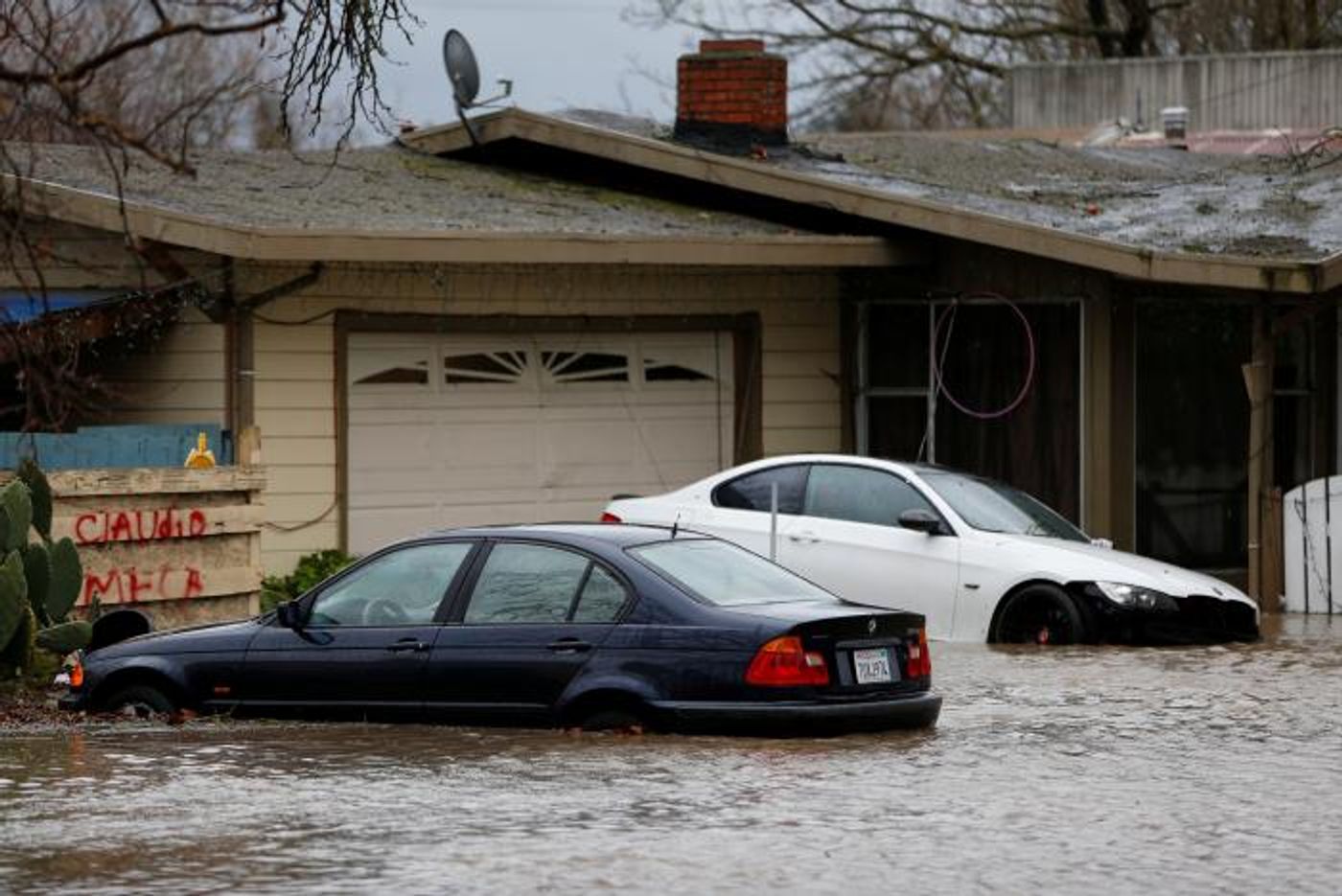Rainstorms siege California
California and Nevada, which have suffered from drought for years, are now under siege from precipitation due to a weather system called the "Pineapple Express" that sent moisture streaming from Hawaii.
According to the National Weather Service, the latest storm, the third in a series of weather events that have brought seasonal snow and rainfall totals to record breaking levels, could bring more: seven feet of snow in higher elevations and three feet at lower altitudes. At the highest elevations, the cold air could translate to as much as 20 feet of snow on the peaks, according to forecasts from the National Weather Service. On Monday, the weather service issued a storm warning for Northern California, western Nevada and southern Oregon for Tuesday through Thursday. During that time, several feet of snow are expected to pile up in high mountain passes and valleys, forecasters said.
Following the LA Times, rising floodwaters have triggered actions to protect the city of Sacramento. For the first time in a decade, the floodgates of the Sacramento River will be opened Monday morning, releasing a wall of water downstream into the Yolo Bypass. The low-level Yolo Bypass is one of several drainage areas designed to catch floodwaters in such situations, but is used for farming in dry years. The California Department of Water Resources last opened the gates of the manually operated weir, built in 1916, in 2005. The National Weather Service warned farmers in the river valley region to have livestock and farm equipment moved out of the way.
In everyone’s mind looking beyond the damage from flooding and transportation blockages due to dangerous mudslides and rivers taking over highways is the question of if all this precipitation will do anything to help the drought. The Washington Post reports, “Such high snow accumulation could mitigate California’s enduring drought by building up the Sierra snowpack. Farming is a crucial facet of the California economy, and the dry conditions and water shortages in recent years have hurt the state’s agriculture industry. The snowpack, which begins to melt in the spring, helps fill the reservoirs that are critical for growing crops during the summer months.”
Indeed, Frank Gehrke, the chief snow surveyor for the California Department of Water Resources, agreed, saying the storm cycle — though potentially dangerous in the short term — could help quench the region’s drought conditions.“This series of storms that we’re experiencing . . . are certainly going to have an impact on water supply, but we’ve got to wait and see how things settle out,” Gehrke said. “The ongoing concern is how warm or cold any particular event is. Warm can bring flooding, and a cold event can build the snowpack. That’s one thing we’re monitoring closely.”
Residents can only hope that this water helps in the coming summer months. Lake Cachuma, a giant reservoir built to hold Santa Barbara County’s drinking water, reached a 7% capacity this past summer - an all-time low - and it’s not alone.
Sources: LA Times, The Washington Post, Reuters









